Luke Murphy
Every Pixel Bright, Jun 1 – Jul 21, 2018
Past: 333 Broome St
Installation view, Every Pixel Bright, Canada, New York, 2018

Installation view, Every Pixel Bright, Canada, New York, 2018
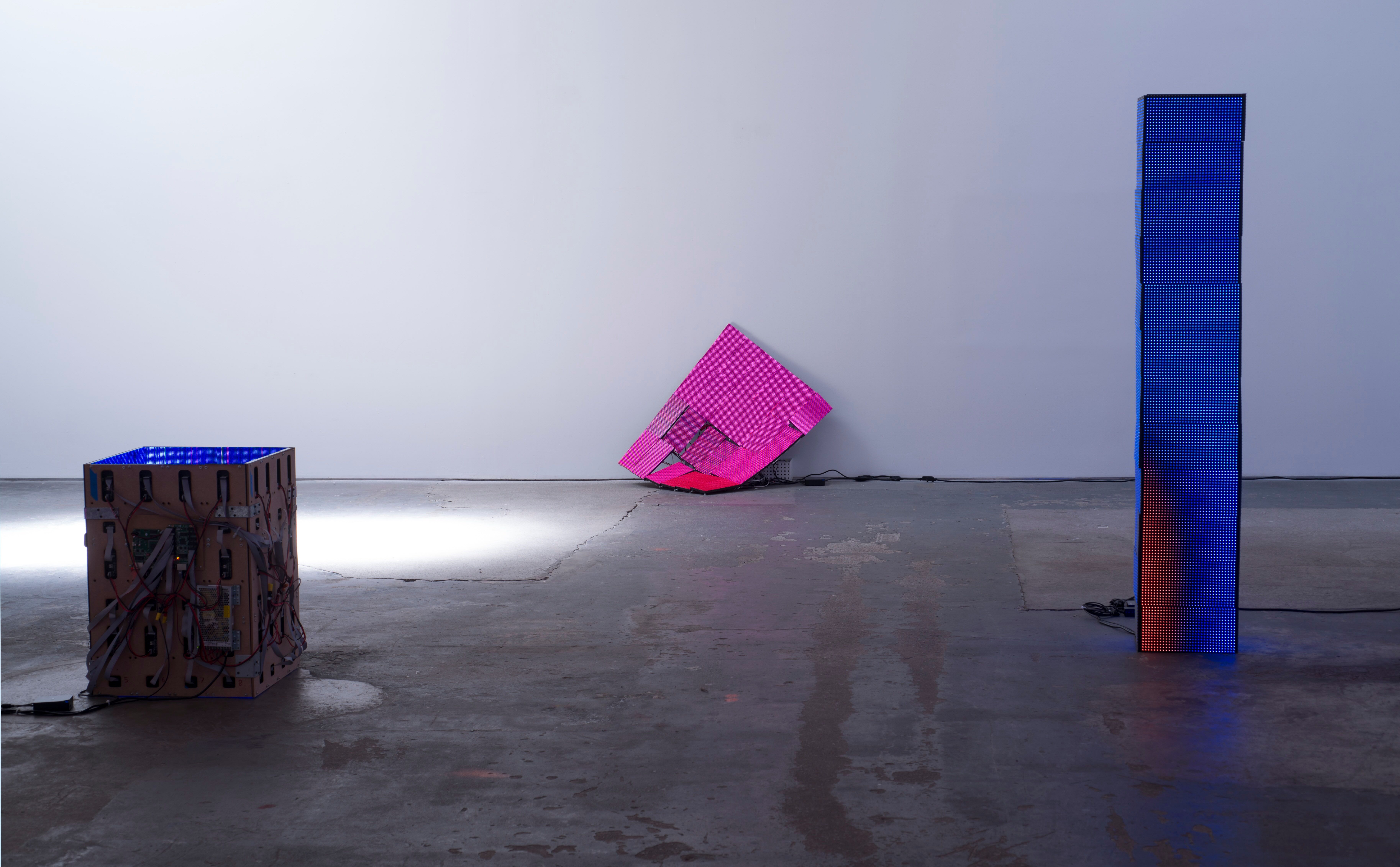
Installation view, Every Pixel Bright, Canada, New York, 2018
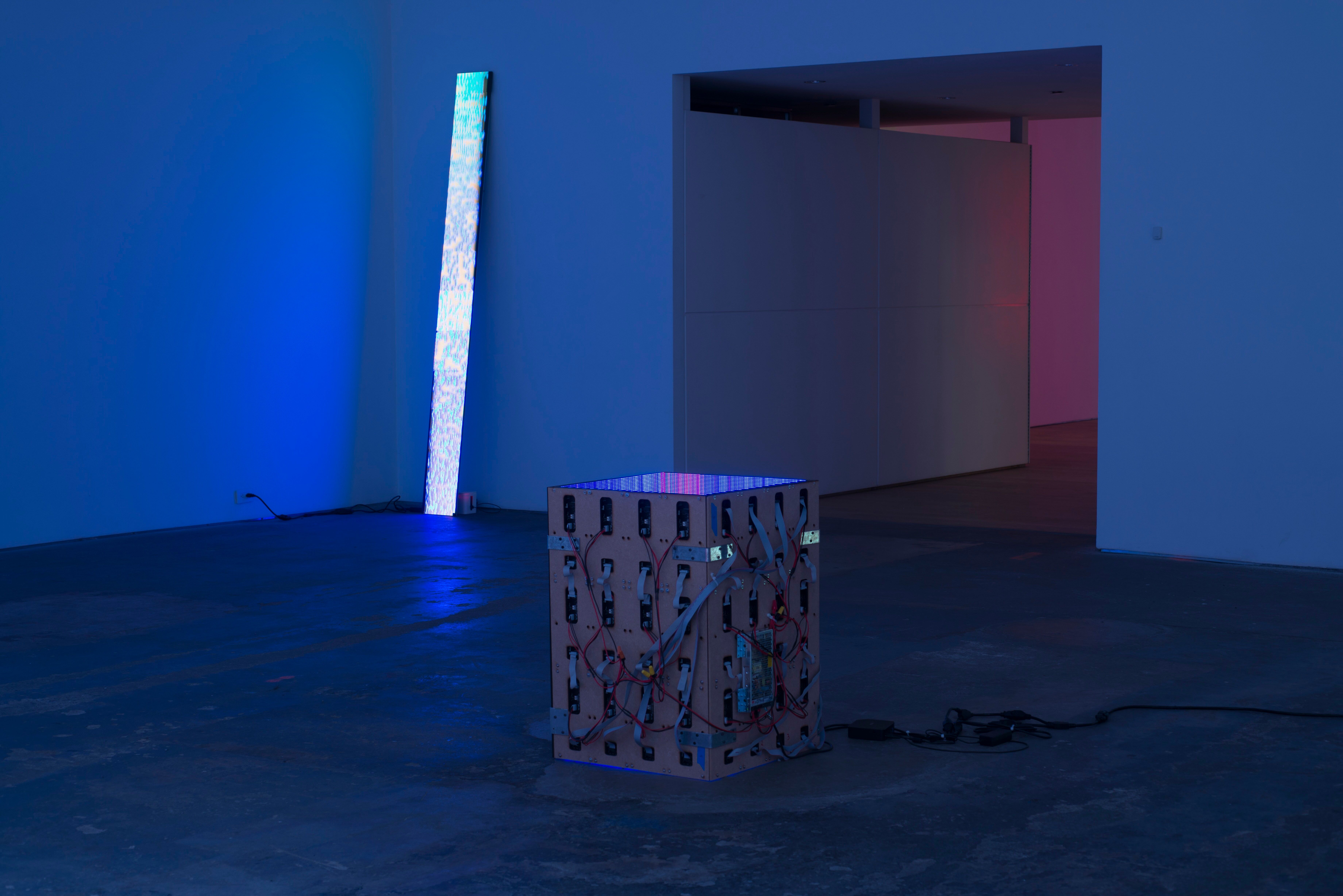
Installation view, Every Pixel Bright, Canada, New York, 2018
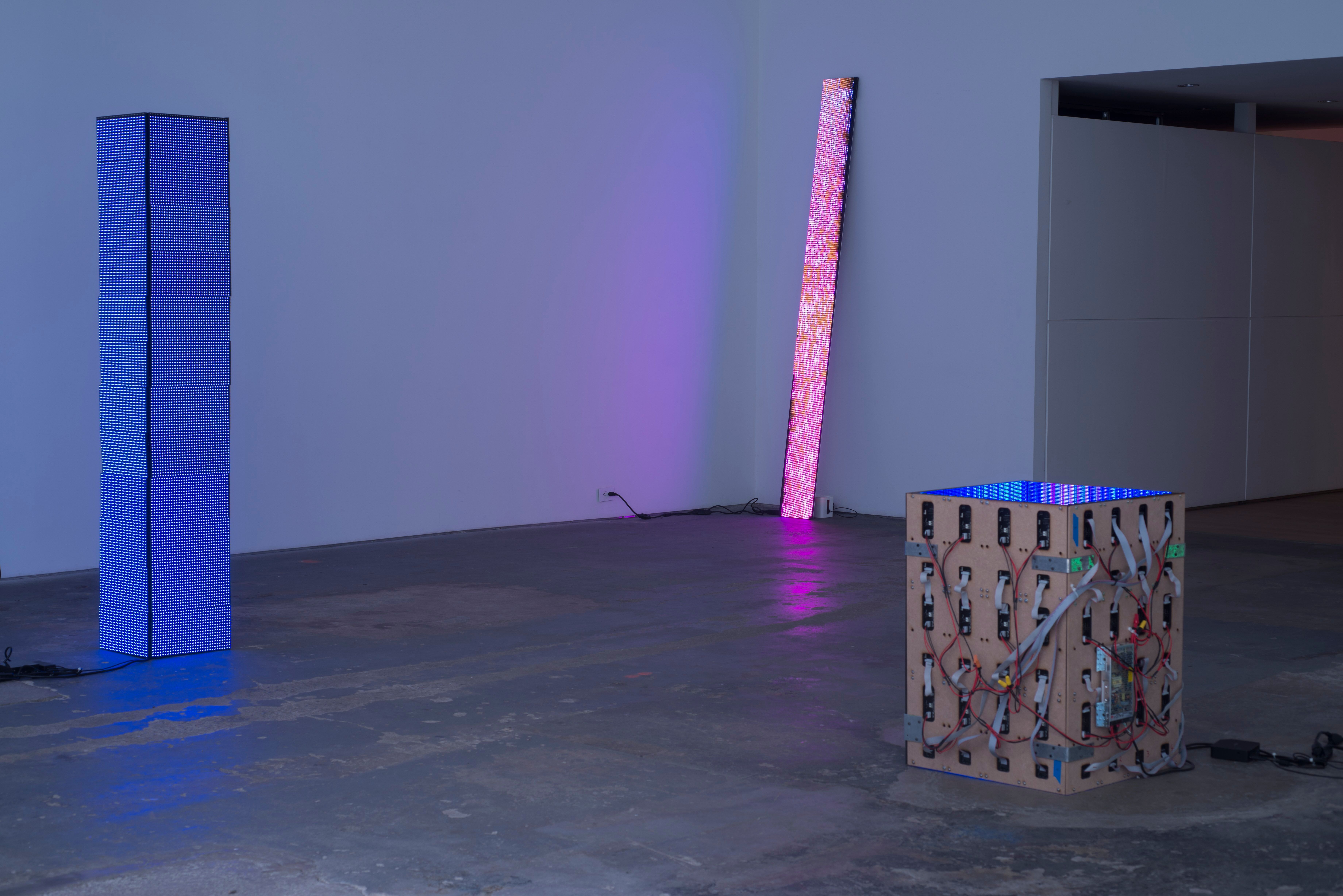
Installation view, Every Pixel Bright, Canada, New York, 2018
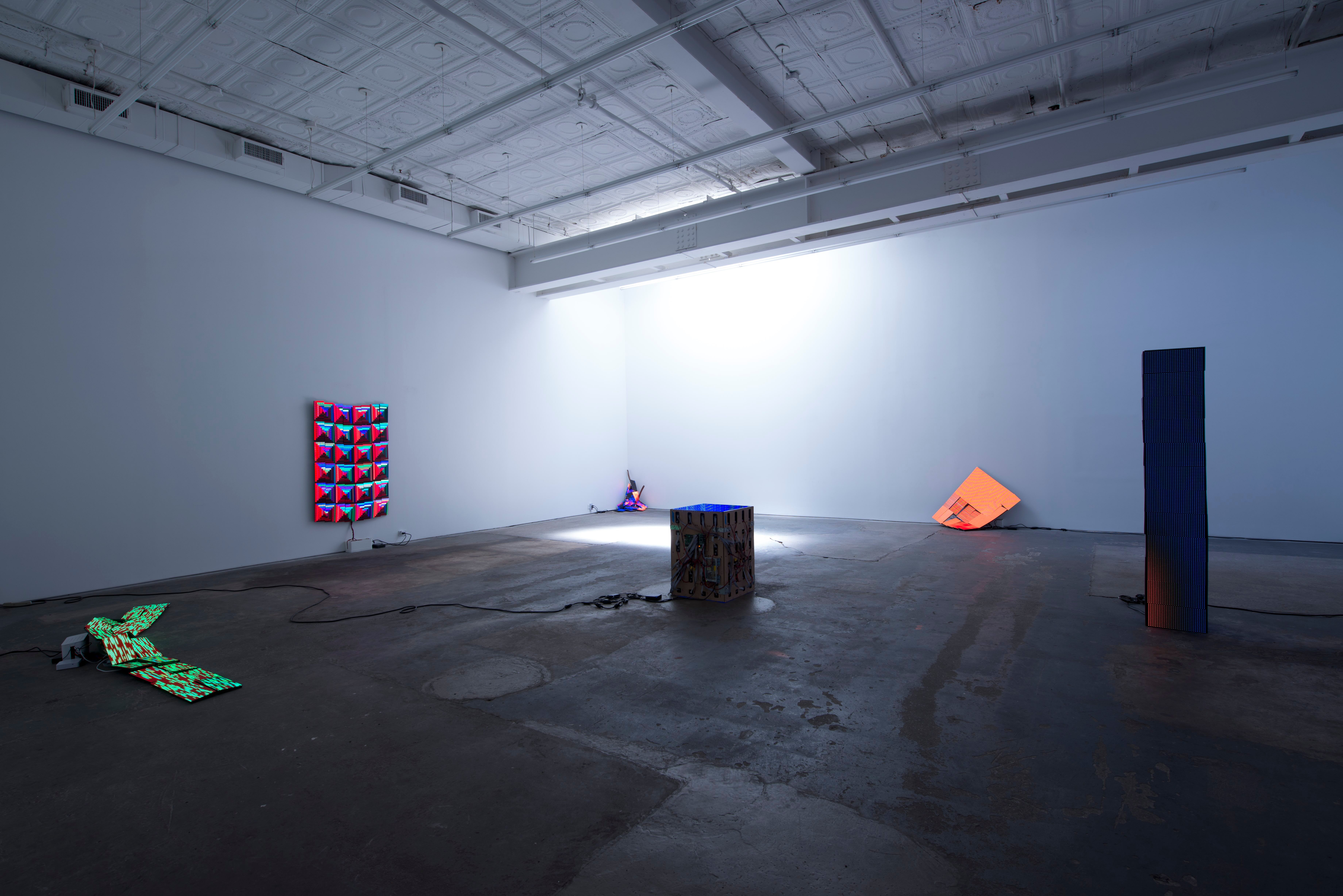
Installation view, Every Pixel Bright, Canada, New York, 2018

Artworks
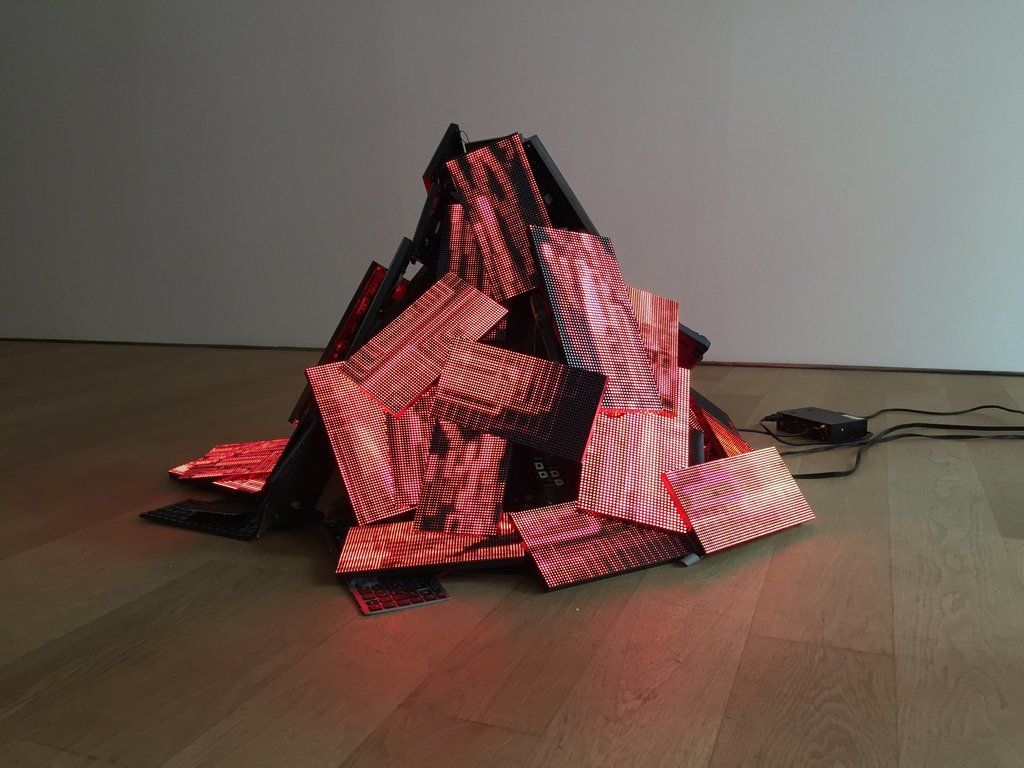
Luke Murphy,
Fire Pile (Algorithmic Fire),
2018,
29 × 45 × 45 in (73.66 × 114.30 × 114.30 cm)
LED matrix panels, software and display hardware

Luke Murphy,
VOF.2 in CamelCase,
2018,
60 ½ × 30 ½ × 2 ¾ in (153.67 × 77.47 × 6.99 cm)
LED matrix panels, software and display hardware
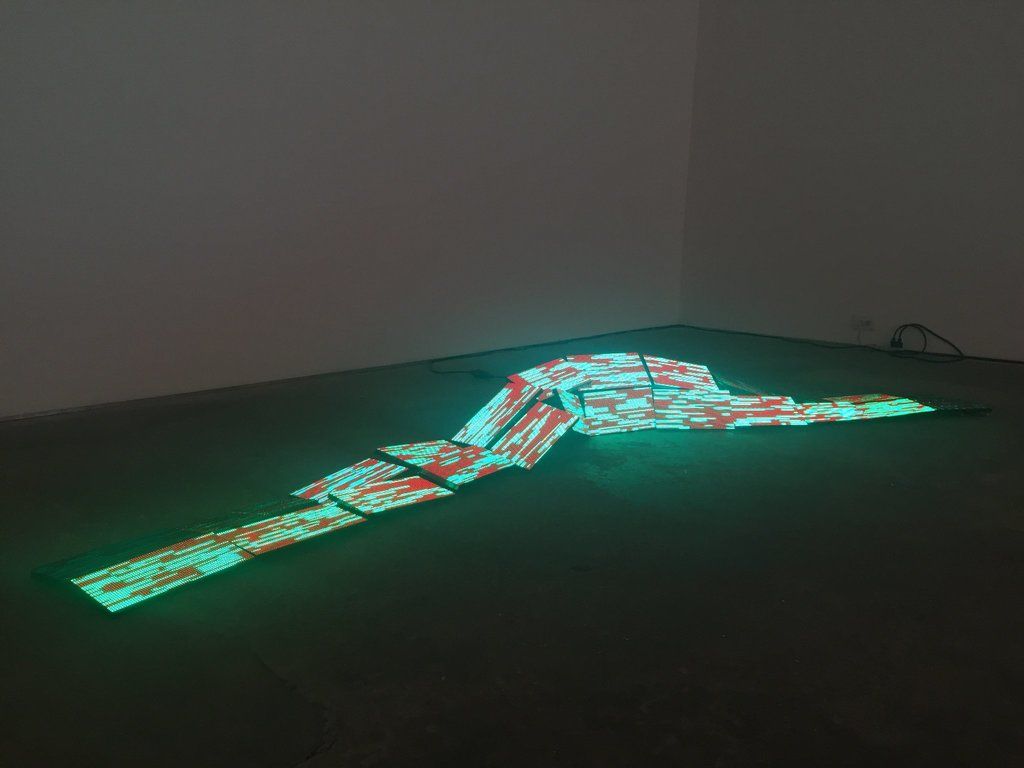
Luke Murphy,
I thought it was a ladder, she said it was a serpent,
2018,
86 × 51 × 12 in (218.44 × 129.54 × 30.48 cm)
LED matrix panels, software and display hardware
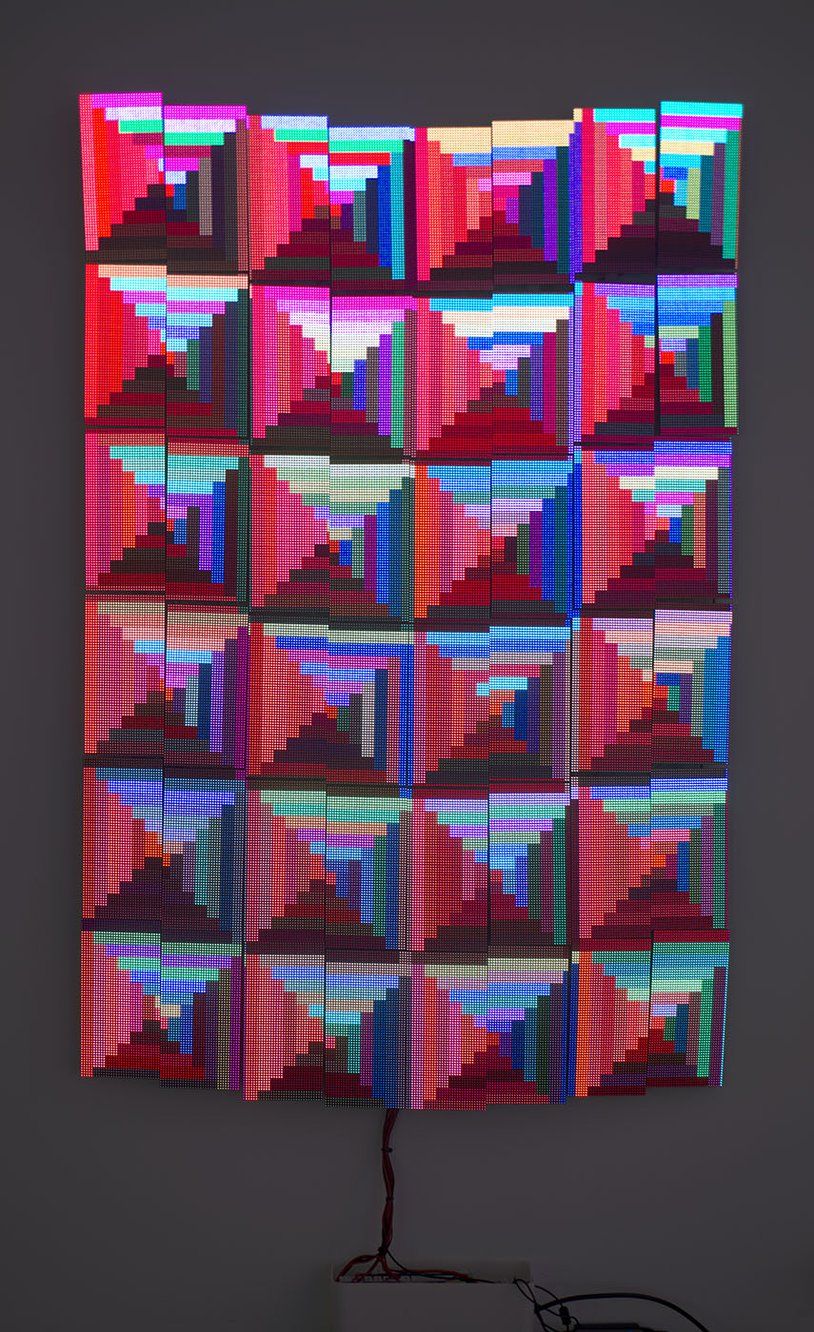
Luke Murphy,
LogCabin Quilt,
2018,
62 × 41 × 5 in (157.48 × 104.14 × 12.70 cm)
LED matrix panels, software and display hardware
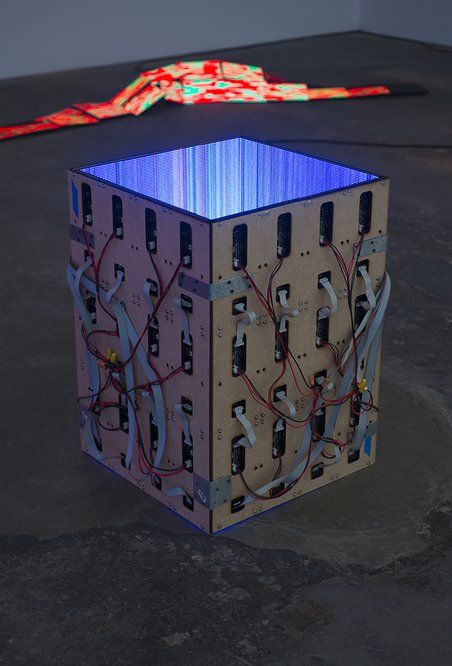
Luke Murphy,
Every Pixel Bright,
2018,
30 ¼ × 25 × 25 in (76.84 × 63.50 × 63.50 cm)
LED matrix panels, software and display hardware

Luke Murphy,
Kindling,
2018,
32 × 24 × 24 in (81.28 × 60.96 × 60.96 cm)
LED matrix panels, software and display hardware
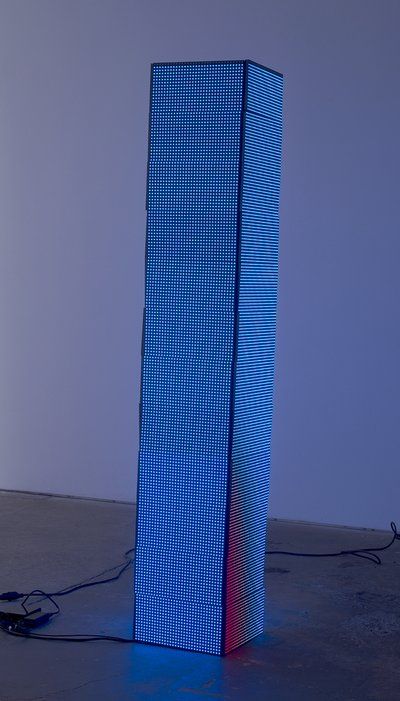
Luke Murphy,
Tower / Piece of Work,
2018,
75 ¾ × 13 ½ × 13 ½ in (192.41 × 34.29 × 34.29 cm)
LED matrix panels, software and display hardware
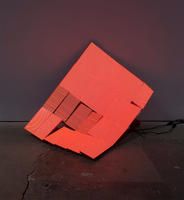
Luke Murphy,
Everything Must Go!,
2018,
36 × 40 × 30 in (91.44 × 101.60 × 76.20 cm)
LED matrix panels, software and display hardware

Luke Murphy,
1 Degree Off,
2018,
101 × 10 × 14 in (256.54 × 25.40 × 35.56 cm)
LED matrix panels, software and display hardware
Press Release
In Every Pixel Bright, Luke Murphy returns to CANADA with a new series of digital sculptures comprised of LED matrix panels and programmed by the artist. Murphy continues to mine and repurpose these humble screens, finding new possibilities in them and perhaps seeking an absurd entry into the Sublime—with cords and hardware exposed.
Stacking, assembling and wiring the panels together, Murphy gives the works new physical forms and connotations: a monolith or a chimney, a slowly sagging quilt, contorted canvases à la Frank Stella. One work snakes from the wall to the floor — another bows out like an organic form —Kindling, in the corner of the gallery, presents like a pile of discarded computer parts with graphic flame images scrolling ad infinitum.
Each object operates with its own rhythm and system — buzzing and glitching in response to their designated code. In fact, Murphy’s programs don’t repeat like an animation on loop. Rather, he writes the code to create formal propositions, endlessly generating new shapes, colors, and sequences within his rule, a practice more akin to an endurance-based drawing exercise, organized pixel by pixel.
There’s an irreverence to Murphy’s project but also an intentionality—he tinkers with crude, flashy technologies and applies the attention of a painter or sculptor, urging us to view the objects in this way. Mr. Murphy is more concerned with the capacity for pathos in the works rather than their accomplishment. He seeks out the humanity of screens, the way they confound and alienate us and simultaneously reveal our aspirations, failures, desires, anxieties and even joy.
Luke Murphy is a systems-based artist whose work is loosely bound by common themes of quantifying elements of the psyche and spirit with a particular interest in the Gnostic gospels, religious paintings, and digital languages – codes and systems to make art. He has presented exhibitions and performances at venues such as: Postmasters, The Kitchen, Artists Space, Klaus von Nichtssagend Gallery, PS122, The Queens Museum of Art, all in New York; MOCA in Jacksonville, Florida; Wynick/Tuck Gallery, Toronto, Canada; and Conduit Gallery in Dallas. His work has been featured in the New York Times and Art Forum. Murphy holds an MFA from the State University of New York at Purchase, a BFA from the Nova Scotia College of Art And Design and a Bachelor of Science in Physiology and English from the University of Toronto.
Press
Martha Schwendener "What to See at New York Galleries." The New York Times July 11, 2018